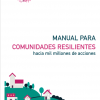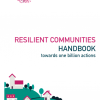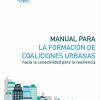PHAST explicado por una facilitadora comunitaria en Belice
Transformación Participativa para la Higiene y el Saneamiento (PHAST por sus siglas en inglés) ayuda a que las comunidades puedan mejorar sus prácticas de higiene y saneamiento, y también su salud. En este video, una facilitadora comunitaria resume de qué se trata PHAST. La Cruz Roja de Belice, con el apoyo de la Cruz […]
PHAST explicado por una facilitadora comunitaria en Belice Read More »



